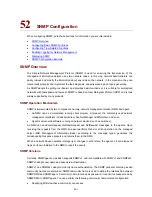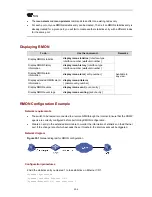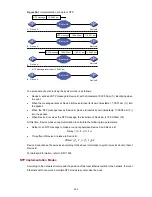
z
Defining the accuracy of clocks by stratum to synchronize the clocks of all devices in a network
quickly
z
Supporting access control (see section
Configuring Access Control Right
) and MD5 encrypted
authentication (see section
Configuring NTP Authentication
)
Sending protocol packets in unicast, multicast, or broadcast mode
z
z
reference
z
The local clock of an S4500 Ethernet switch cannot be set as a reference clock. It can serve as a
reference clock source to synchronize the clock of other devices only after it is synchronized.
The clock stratum determines the accuracy, which ranges from 1 to 16. The stratum of a
clock ranges from 1 to 15. The clock accuracy decreases as the stratum number increases. A
stratum 16 clock is in the unsynchronized state and cannot serve as a reference clock.
Implementation Principle of NTP
Figure 54-1
shows the implementation principle of NTP.
Ethernet switch A (Device A) is connected to Ethernet switch B (Device B) through Ethernet ports. Both
you
am, and the clock of Device B is set to 11:00:00 am.
z
It takes one second to transfer an NTP message from Device A to Device B or from Device B to
Device A.
having their own system clocks, they need to synchronize the clocks of each other through NTP. To help
to understand the implementation principle, we suppose that:
z
Before the system clocks of Device A and Device B are synchronized, the clock of Device A is set
to 10:00:00
z
Device B serves as the NTP server, that is, the clock of Device A will be synchronized to that of
Device B.
54-2
















































